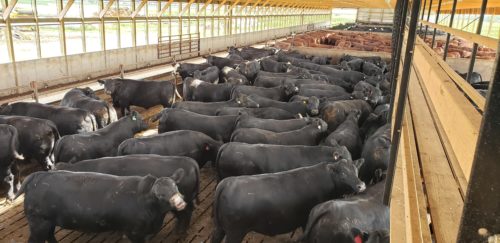Pre-harvest Protocols with Beta Agonists
Posted: April 20, 2022 | Written By: Heidi Doering-Resch, M.S., Form-A-Feed

While beta agonists (ractopamine) aren’t approved for use in cattle sold to all packing facilities, and they aren’t right for all situations (heat stress, too heavy of cattle to start with), they certainly do add additional weight and reduce feed conversion the last 28-40 days on feed. Given excellent returns such as this, with the current cost of gains, they are worth a look at and discussion with your Form-A-Feed Nutrition and Production Specialist. Beta agonists are quite flexible in how they can be used to improve performance and weight the last few days on feed. The net return begins soon after feeding the product and remains throughout the use of the product. Additionally, the weight that is put on is not lost if marketing of the cattle is delayed, a common question that is asked.
A few benefits of the use of beta agonists when fed at 300 mg include (courtesy of Elanco Animal Health):
- Additional live and hot carcass weight (HCW) in upwards of 22 lbs. in native steers and 20 lbs. of HCW
- Feed conversion improved by 12 to 16%
- Improved dressing percent (DP) by 0.7 units
At 200 mg of ractopamine:
- Additional live and HCW improvements of 15 lbs. live and 13.5 lbs. HCW in Native steers
- Feed conversion improved by 14.5%
- Improved DP by 0.5 units
Running the current economics, there is a sound ROI on the use of ractopamine the last 28 days. It is encouraged to run the figures before feeding heifers, steers, or Holsteins to understand what your return may be. The returns get tighter on Holsteins, but there is still a ROI as we look at HCW gained.
There are other scenarios when use of ractopamine can be of support. If use of an implant is running out the last few days on feed, ractopamine can be of support so that F:G does not get out of hand. Additionally, your ADG will not fall out of bed.
Prior to putting cattle on ractopamine, a few questions should be asked:
- Does the packing facility accept ractopamine fed cattle?
- Are my cattle ready to market within a 28-to-40-day window?
- Is the environment right to put cattle on ractopamine?
- Should I start or feed a 200, 250 or 300 mg level?
Using this technology as part of your cattle feeding program to generate more profits during the last few weeks on feed is certainly something to consider.
Other technologies for cattle marketing to packing facilities that do not accept ractopamine fed cattle or are all natural is to feed Hydro-Lac®. Use of this product to preserve carcass weight and reduce the potential for dark cutting carcasses has been well evaluated. With no withdrawal, ease-of-use, well-researched, and flexible, it is a go-to product for many feedlots the last 2 to 28 days on feed.
For further questions on pre-harvest technologies please be sure to reach out to your Form-A-Feed Production and Nutrition Specialist.